8th January 2024
Hercules Bay
On leaving Stromness, the Seaventure doubled back to Hercules Bay, a tiny bay with the opportunity to see Macaroni penguins up close and perhaps a Light-mantled Albatross. A shore landing wasn’t permitted, but we were able to cruise around by the penguin colony and the small beach full of seals. Lynne left Peter aboard the ship, to catch up with our blog, and joined a Zodiac, where a number of the husbands had also decided to give the outing a miss.
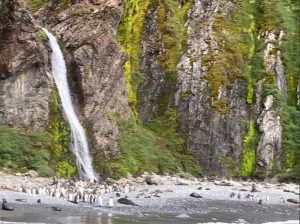
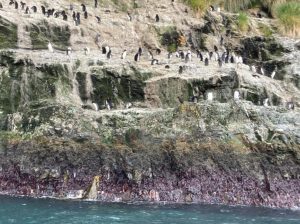
We were able to spend as much time as we needed enjoying the sights of the orange-feathery topped penguins hopping down along the rocks to the water’s edge to catch fish, while the Gentoos just dived in. There were seals bobbing around in the water. Lynne was delighted to see some Macaroni penguins porpoising in the water.
The highlight was the sight of four Light-mantled Albatross, perched on a patch of grass high up on the cliff edge above a small elephant seal cove. Then one of the Albatrosses flew around in an elaborate courting dance. Fabulous.
Grytviken
The ship then sailed to Grytviken, where we waited for a speedy border clearance before going ashore by Zodiac. Grytviken was named ‘pot bay’ by the Swedish Antarctic Expedition in 1902, finding old English try pots used to render seal oil at the site. The settlement was re-established in 1904 by explorer Carl Anton Larsen as a whaling station, only closing in 1966.
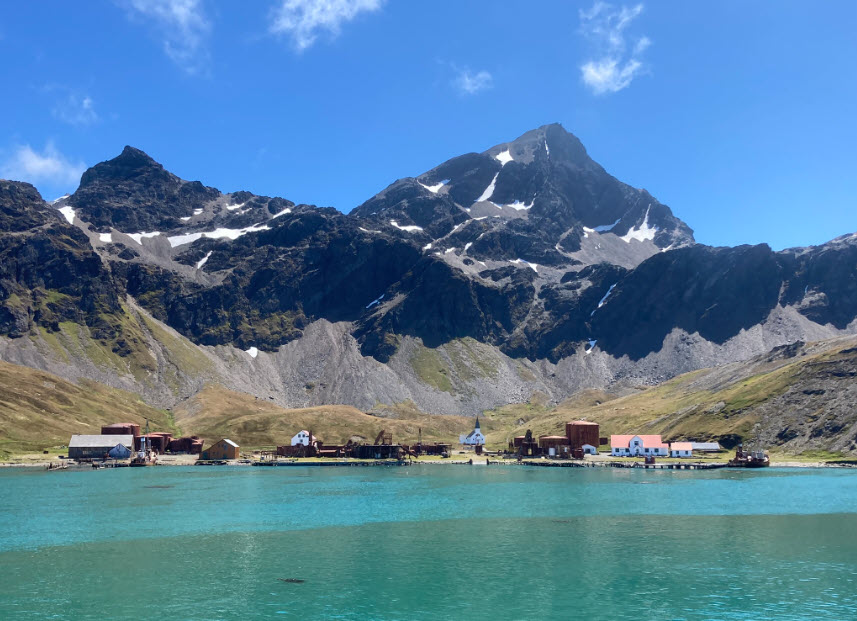
We spent the afternoon visiting the tiny graveyard, where Sir Ernest Shackleton is buried. He died on his last exploration ship, the Quest, in Grytviken. His body was moved to Montevideo in Uruguay on his way home, but his widow, Lady Shackleton, bid that he should be returned to South Georgia, as he was at his happiest there.
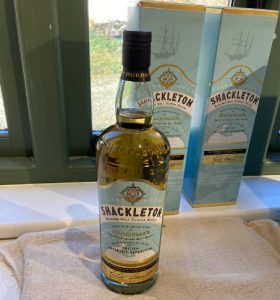
Fellow explorer and second in command of the Quest, Frank Wild and many Norwegian whalers are buried here. The latest grave is of Felix Artuse, an Argentine submarine sailor, who died in the invasion of South Georgia in 1982.
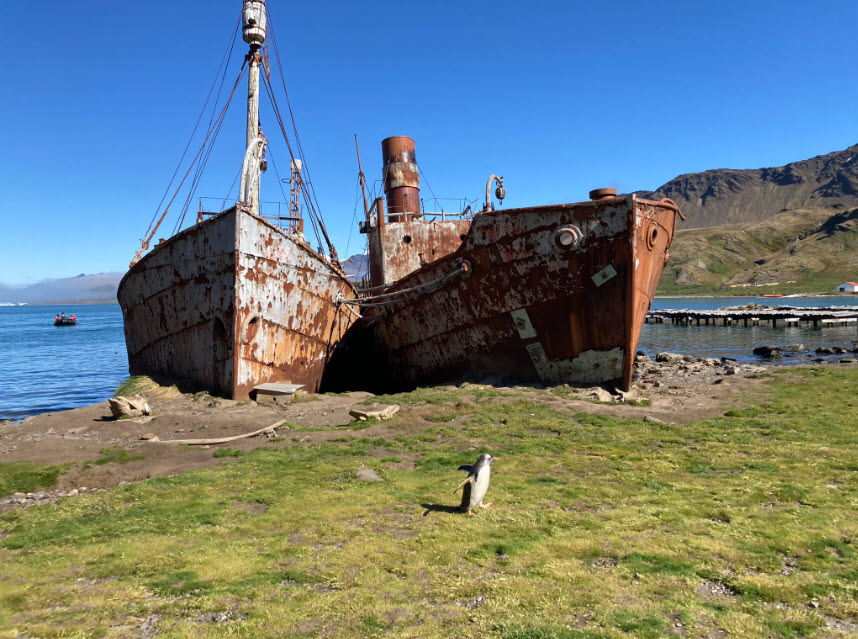
There is a museum, a church and a Post Office at Grytviken as well as many seals that have reclaimed the area. The museum exhibits some astonishing photos taken by Frank Hurley of the failed Imperial Trans-Antarctic Expedition 1914-1917 on the ship Endurance, and an interesting film about the sixty years of whaling at the station. The rusted machinery and tanks bear witness to the scale of the industry in its heyday, as do the rusting wrecks of the whale-hunting ships.
We allowed ourselves the luxury of buying a couple of souvenirs in the gift shop at the museum, where we learned that one of the assistants comes from the Shetland Islands and attended Aberdeen university. She spends the southern hemisphere’s summers on South Georgia and the northern hemispheres in the Shetlands. We doubt she ever experiences hot weather!
Then off to the tiny church, shipped flat-packed from Norway and “christened” on Christmas Day 1913. It reminded us of the church in which we got married in Frösön in the North of Sweden.
From there we did a hike, elevation gain two hundred metres, to a viewpoint with the settlement below and mountains reaching 2,375m (7,800ft) in the background. The weather was glorious. We dawdled at the viewpoint, so that we could enjoy the scenery and silence as we descended.
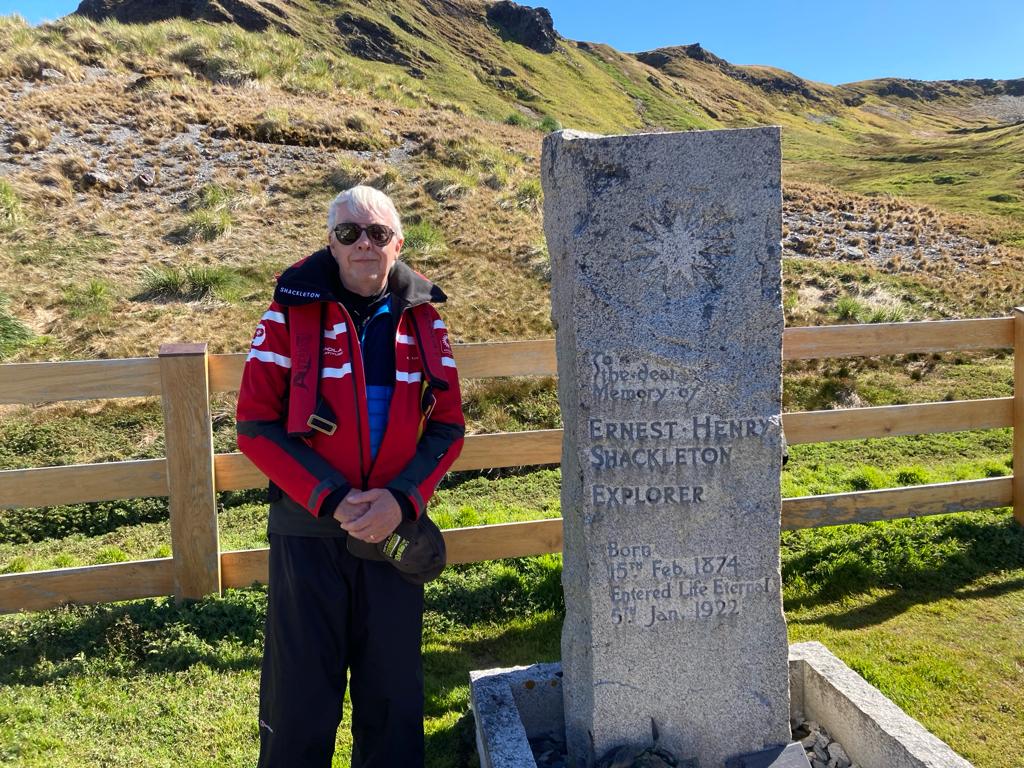
For speed and efficiency of travel give me Amundsen, for scientific, give me Scott, but when all hope is lost get down on your knees and pray for Shackleton. – Sir Edmund Hilary
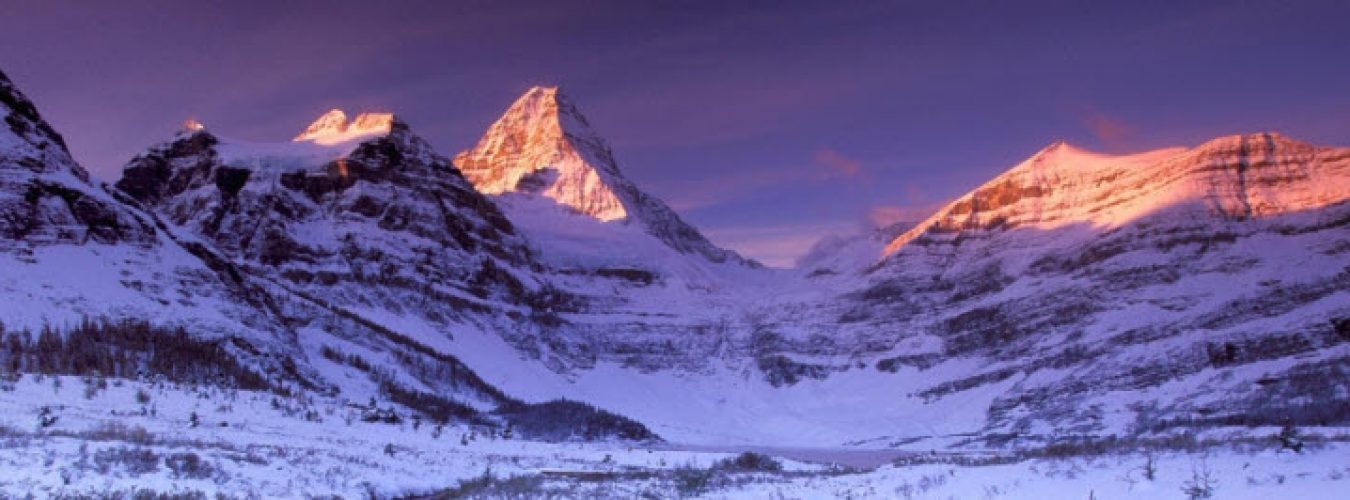
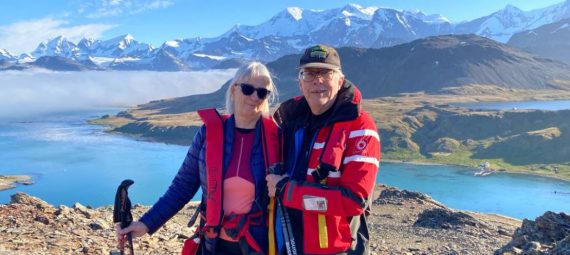
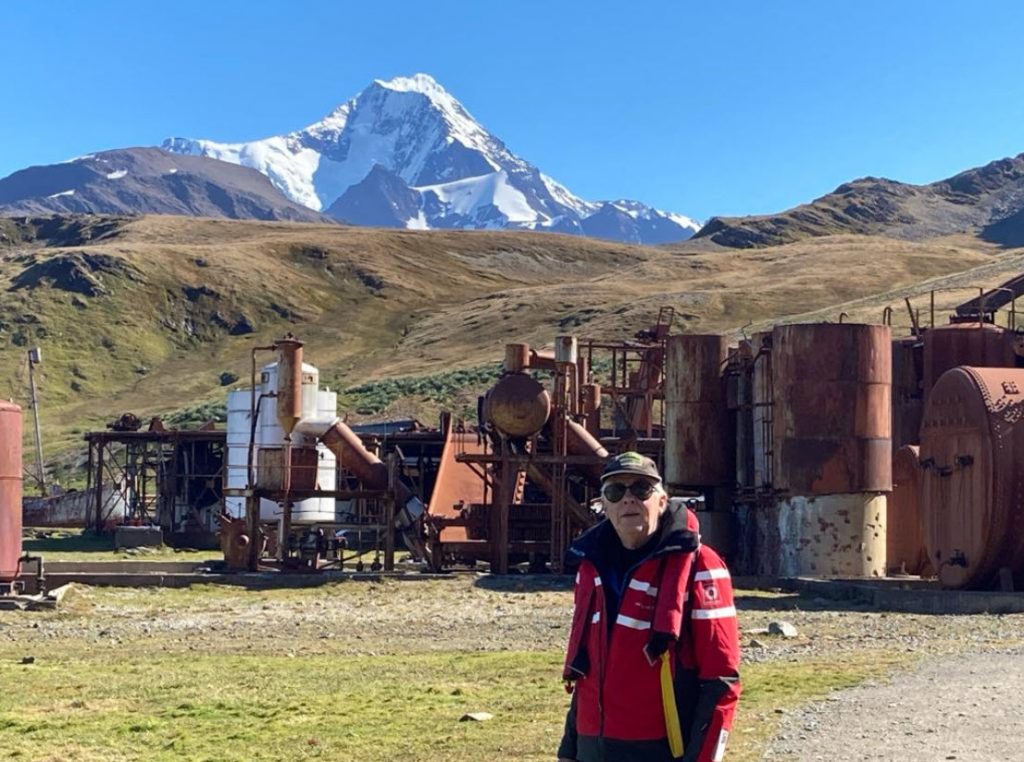
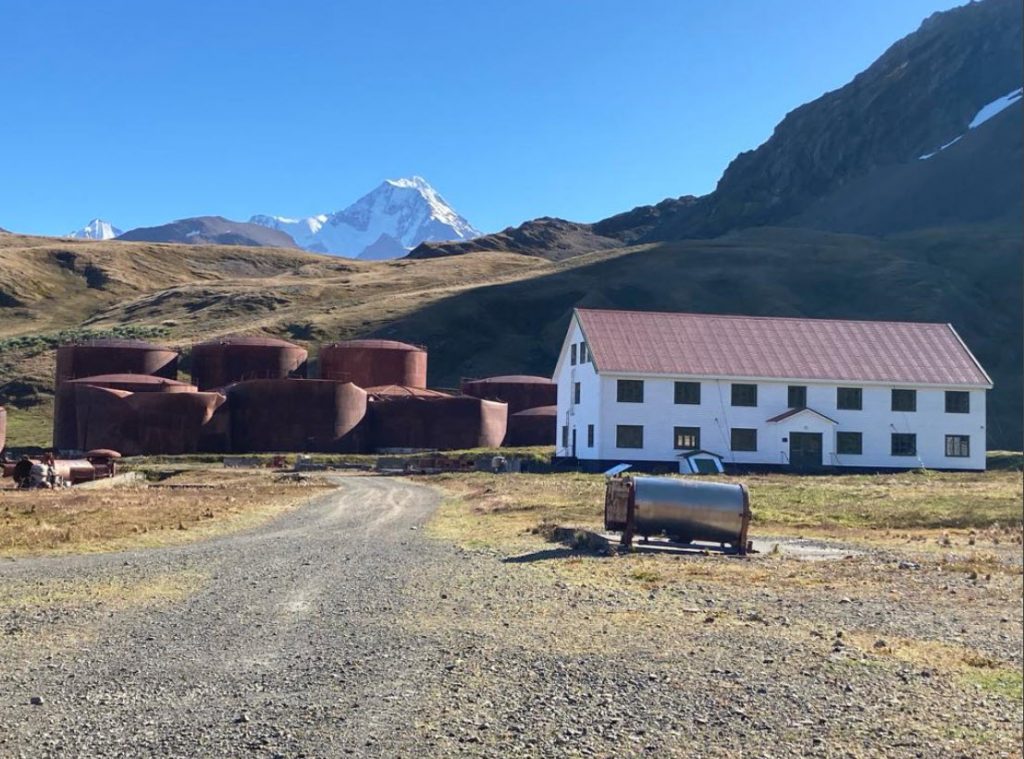
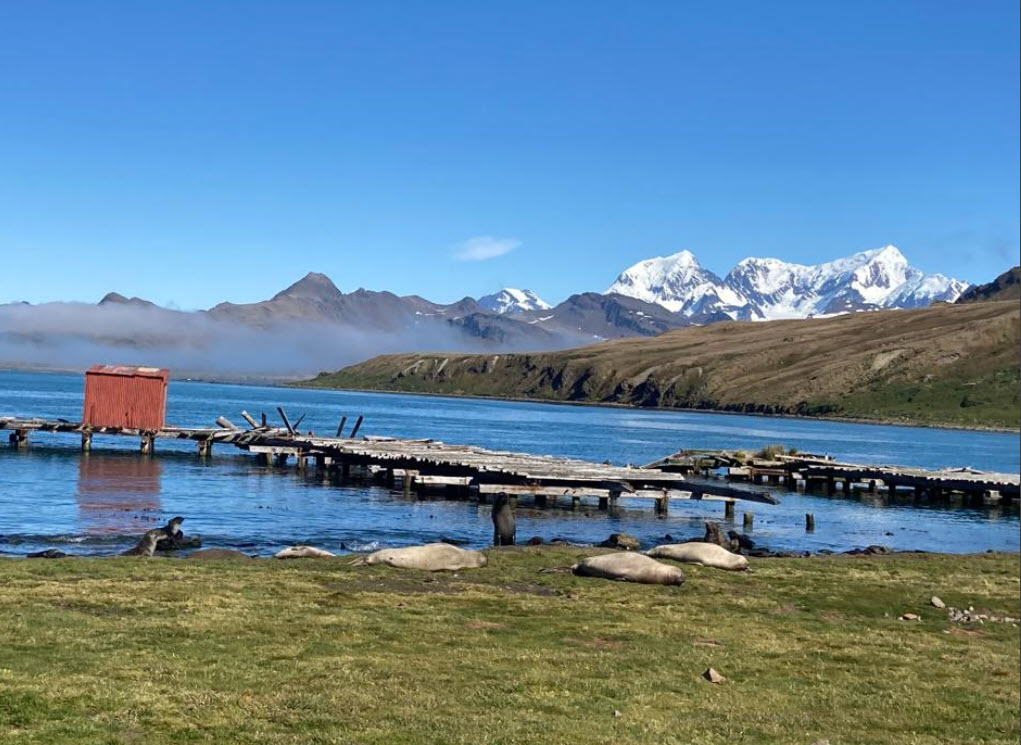
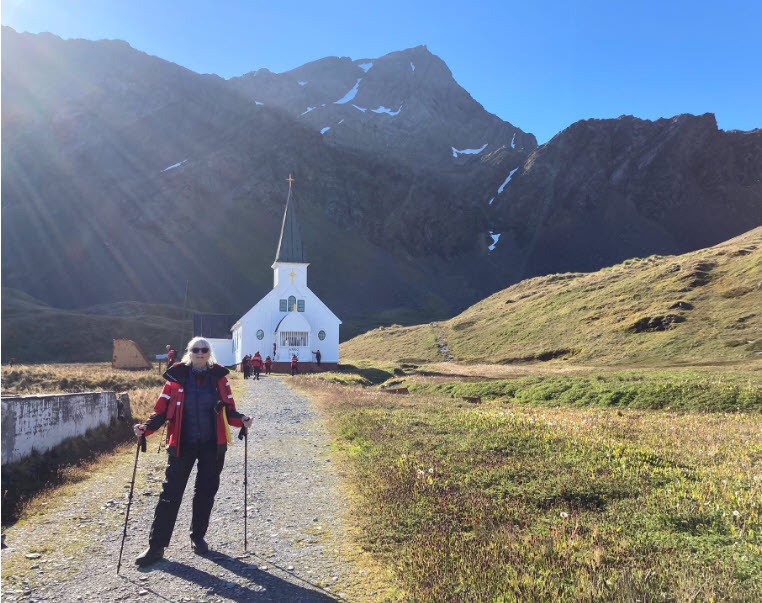
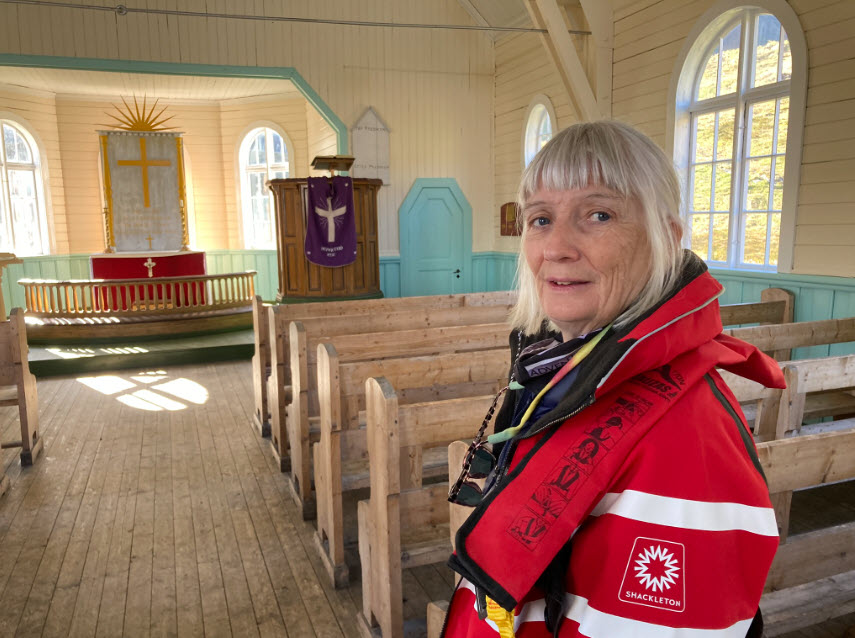
Just wanted to check whether The Boss is Ernest Shackleton or Peter?
…actually, Lynne, behind the camera….
I should have known 🤣
Wonderful to experience this stunning part of the world in such favourable weather, while remembering the incredible feats of endurance performed by others.